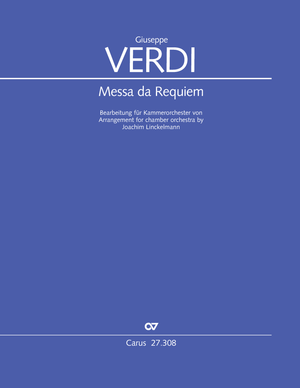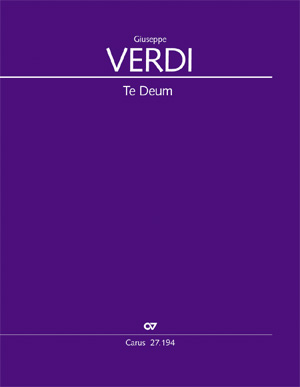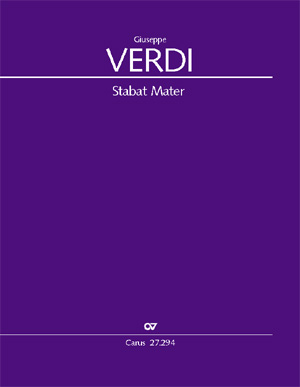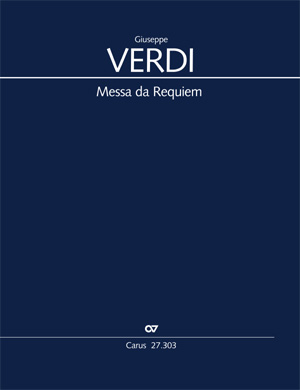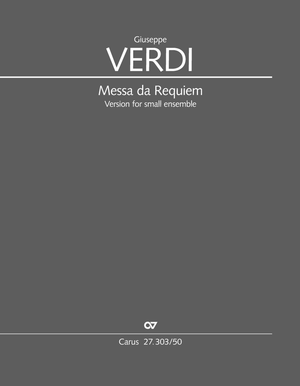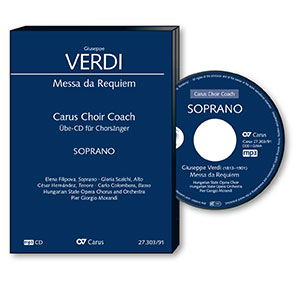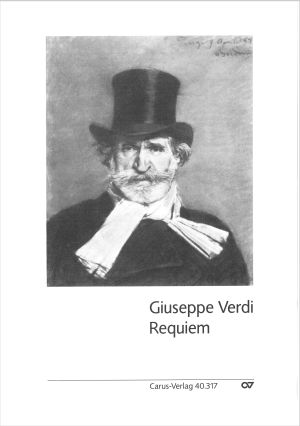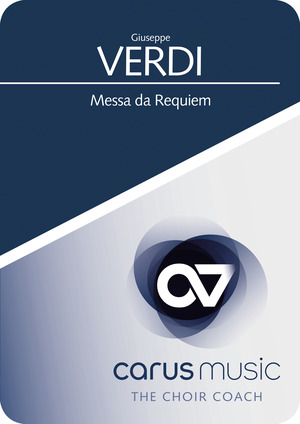Messa da Requiem
Arrangement for chamber orchestra (arr. J. Linckelmann) 1874/2021
Verdi's Requiem is one of those works that almost every choir would like to have sung (at least) once. This arrangement for chamber orchestra means that smaller choirs and choirs with more limited space or financial means also now have the opportunity of performing this popular work. The scoring, with seven different wind and brass instruments (flute, oboe, clarinet, bassoon, horn, trumpet, and trombone) plus strings, timpani and bass drum, guarantees a wide dynamic range and a nuanced sonority. The four offstage trumpet parts can be played either as in the original, reduced to two trumpets, or even omitted. The relevant passages in the Tuba mirum also contain ossia passages for the orchestral brass, so that they can play their parts in performance without the need for offstage trumpets. Michael Betzner-Brandt’s successful arrangement of the Requiem (Carus 27.303/50) radically reduces the scoring to five instrumentalists and transfers the work to a different sonority, but in the arrangement by Joachim Linckelmann the symphonic character is retained. All the vocal parts (soloists and chorus) are identical to the original version, so the vocal score, vocal score XL, and chorus scores of the existing Carus edition can be used by the chorus.
- wind and brass parts reduced to just seven single instruments
- maximum flexibility in the use of offstage trumpets
- vocal scores and chorus scores from the original version can be used
- carus plus: the work (original version) is available in the carus music app, the Choir Coach, as well as in the Carus Choir Coach series (audio only).
| Original version | Arrangement for chamber orchestra |
| Solo SMsTB, Coro SATB, Picc, 2 Fl, 2 Ob, 2 Clt, 4 Fg, 4 Cor, 4 Tr, 4 Ferntrompeten, 3 Trb, Oficleide, Timp, Perc, 2 Vl, Va, Vc, Cb | Soli SMsTB, Coro SATB, Fl, Ob, Clt, Fg, Cor, Tr, [4 (2) Tr da lontano], Trb, Timp, Gran Cassa, 2 Vl, Va, Vc, Cb |
-
Composer
Giuseppe Verdi
| 1813-1901Giuseppe Verdi was born in Le Roncole on the 9th October 1813, the son of an innkeeper and small-scale farmer. Although he grew up in poor circumstances his extraordinary musical talent was soon recognized and he received organ lessons, then – assisted by a patron – he entered the Busseto Gymnasium. His benefactor Antoni Barezzi continued to assist him privately after the Milan Conservatoire had refused him admission. Following some years as organist and director of music in Busseto he made his breakthrough in Milan with the premiere of the opera "Nabucco" in 1842. The works which he wrote after 1850 are still among the principal pillars of the opera repertoire. Personal details
-
Arranger
Joachim Linckelmann
Frequent questions about this work
Can I also use the “normal” vocal score /03 and the choral score /05 from the full-scale version to sing the version presented here?
Are the offstage trumpets optional?
Can the string parts of the original version (Carus 27.303/00) also be used for this version?
 There are no questions and answers available so far or you were unable to find an answer to your specific question about this work? Then click here and send your specific questions to our Customer Services!
There are no questions and answers available so far or you were unable to find an answer to your specific question about this work? Then click here and send your specific questions to our Customer Services!


